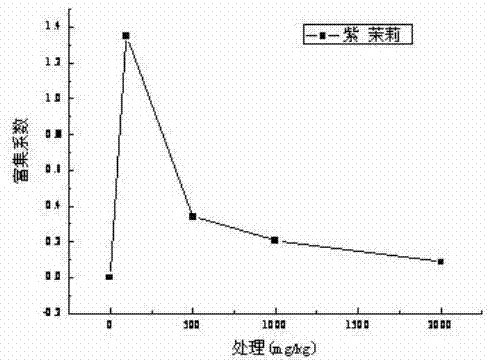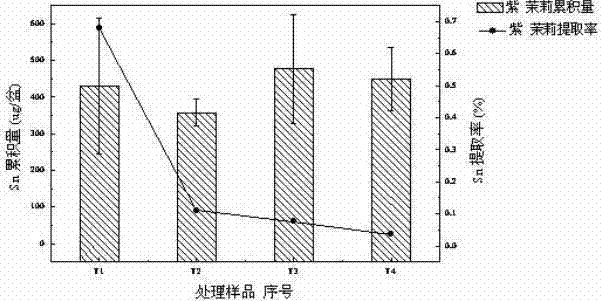A method for remediating SN polluted soil by using the flower plant mirabilis
A technology for polluting soil and jasmine, which is applied in the field of repairing Sn-contaminated soil by using the flower plant Mirabilis to achieve the effects of strong tolerance, easy growth and cultivation, and beautification of the environment
- Summary
- Abstract
- Description
- Claims
- Application Information
AI Technical Summary
Problems solved by technology
Method used
Image
Examples
Embodiment
[0024] Pot experiment of Mirabilis mirabilis enriching Sn pollutants
[0025] The potting experiment site is located in a garden in a city center, with an altitude of 2-5m. There are no heavy metal pollution sources around the experimental site. It is a warm temperate semi-humid continental monsoon climate with distinct four seasons. There is no heavy metal pollution source around the experimental site. The soil used in the experiment was taken from the garden soil, and Sn was not detected in the soil.
[0026] The method of utilizing flower plant mirabilis to restore Sn polluted soil, the specific steps are as follows:
[0027] 1) the Mirabilis seeds are 1% H with a volume percentage concentration 2 o 2 Soak in aqueous solution for 15 minutes, then wash with distilled water for 3 times, and blot dry with filter paper for later use.
[0028] 2) Sow the treated Mirabilis seeds in seedling trays with non-polluted soil, and put the seedling trays into an artificial climate incub...
PUM
 Login to View More
Login to View More Abstract
Description
Claims
Application Information
 Login to View More
Login to View More - R&D
- Intellectual Property
- Life Sciences
- Materials
- Tech Scout
- Unparalleled Data Quality
- Higher Quality Content
- 60% Fewer Hallucinations
Browse by: Latest US Patents, China's latest patents, Technical Efficacy Thesaurus, Application Domain, Technology Topic, Popular Technical Reports.
© 2025 PatSnap. All rights reserved.Legal|Privacy policy|Modern Slavery Act Transparency Statement|Sitemap|About US| Contact US: help@patsnap.com



